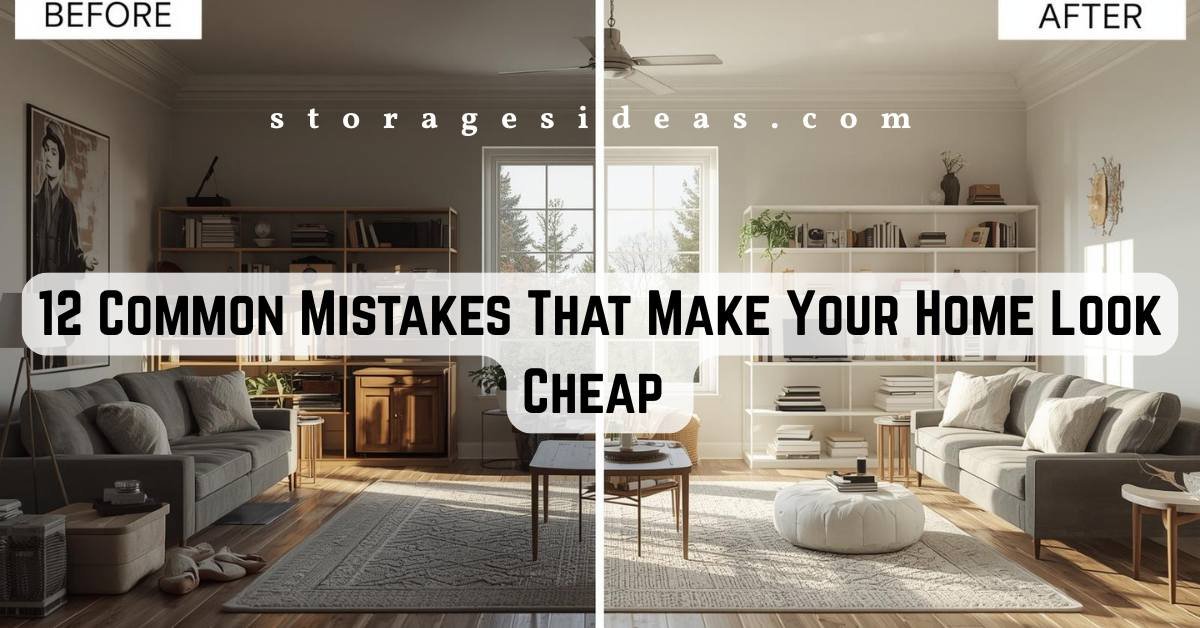I’ll be honest, I’ve made almost every decorating mistake in the book. For years, I was obsessed with making my home look beautiful. I’d spend weekends rearranging furniture, adding new décor, or scrolling through Pinterest for “budget home ideas.” But no matter what I changed, something always felt… off.
The colors were right, the furniture was decent, and yet my space still looked a little underwhelming, not cozy, not luxurious, just “okay.” It didn’t make sense to me. I’d walk into someone else’s home and think, Wow, this feels so elegant, even though I knew they hadn’t spent much more than I had. That’s when I realized something important: it’s not the money that makes a home look expensive. It’s the small details most of us overlook.
Once I started noticing those details, everything changed. I saw how clutter, harsh lighting, mismatched hardware, and cheap fabrics were quietly making my home look cheaper than it really was. Fixing them didn’t cost much, but it made a huge difference.
So, if you’ve ever felt like your space doesn’t reflect your taste (no matter how much effort you’ve put in), here are 12 common mistakes that make your home look cheap and the easy, affordable fixes that actually work.
In This Guide, I’ll Cover
Toggle1. Keeping Too Much Stuff on Display

Let’s start with the hardest truth: clutter is the fastest way to make any home look messy and inexpensive. I used to think filling shelves with pretty items made a space look full and styled. Instead, it just looked overcrowded and chaotic.
Every surface had something on it: candles, small plants, framed photos, little souvenirs from trips. It wasn’t bad individually, but together it looked like a flea market. Even my guests didn’t know where to look first.
Why does it make your home look cheap:
When every inch of space is filled, the eye gets overwhelmed. There’s no focus point, no sense of order. The room loses its breathing space, and that visual “clutter” tricks the brain into seeing the space as smaller and less elegant.
How I fixed it:
I started editing. One weekend, I pulled everything off my shelves and only put back what I truly loved or used. Suddenly, the room felt calmer. I also learned that grouping décor, three items of different heights, on a shelf looks balanced and stylish.
Hidden storage became my best friend: woven baskets, boxes, and under-table bins. They hide what I need but don’t want to see. Now, my living room looks curated instead of crowded, and the best part? It feels twice as big.
2. Ignoring Lighting
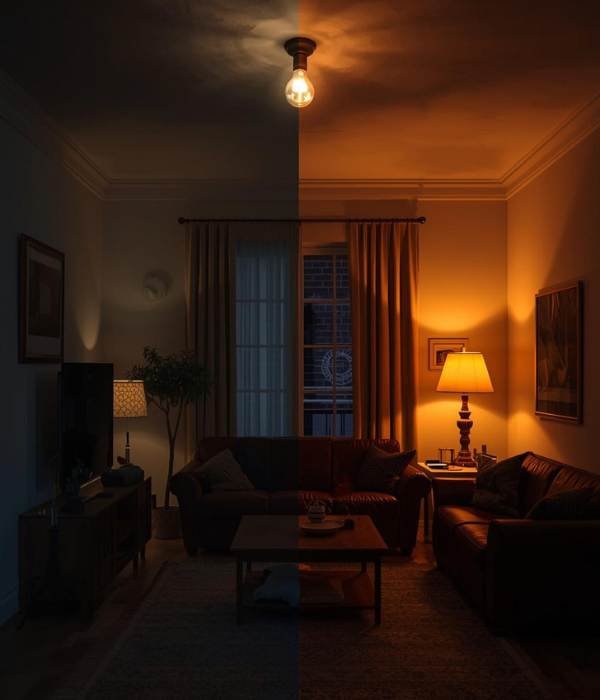
Lighting is the silent designer of every room, and I completely ignored it for years. I used to depend on one ceiling light in every space and wondered why my home felt cold or uninviting.
When the lighting is off, even expensive furniture can look dull. Harsh, cool-toned lights make your space feel sterile (think hospital room). On the other hand, dim lighting makes everything look gloomy and tired.
Why does it make your home look cheap:
Poor lighting flattens your space. It highlights flaws like uneven paint or clutter while hiding the cozy corners. It also kills any texture or color harmony you’ve built with your décor.
How I fixed it:
I started layering light, and that changed everything. Instead of one source, I added warm bulbs to lamps, a small pendant over my reading nook, and fairy lights behind my mirror for soft ambiance. I even placed a dim light under a floating shelf; it added instant warmth.
Natural light matters too. During the day, I keep curtains slightly open to let sunlight bounce off lighter walls. It adds a natural glow money can’t buy.
If you’re not sure how to layer your lighting correctly, this guide from Homes & Gardens explains how to mix ambient, task, and accent lighting to create a warm, balanced look that feels professionally styled.
Now, every room in my home feels warm, welcoming, and styled even at night.
3. Using Outdated or Mismatched Hardware

This mistake is subtle but powerful. You might not notice it right away, but outdated hardware quietly ages your home. For the longest time, my kitchen had mismatched handles, some silver, some bronze, and a faucet that looked like it came from the early 2000s. It didn’t matter how clean everything was; the space still looked tired.
Why does it make your home look cheap:
Old or mismatched hardware breaks visual harmony. When handles, knobs, and faucets clash, they make your décor look accidental, like it evolved over time without a plan.
How I fixed it:
I swapped everything. I chose a matte black finish for all handles and knobs from kitchen cabinets to wardrobe drawers. It created instant consistency. The cost? Way less than a furniture upgrade.
If you’re on a tight budget, spray-painting existing hardware can work wonders, too. Just make sure they match in color and style. The goal is unity, a small detail that speaks volumes about your overall design.
Now, every time I walk into my kitchen, it looks modern, sleek, and intentional, even though the layout hasn’t changed at all.
(Thinking about decorating your kitchen? Check out Smart Small Kitchen Décor and Storage Hacks)
4. Leaving Cables and Wires Visible

Oh, the cord chaos. For years, I pretended I didn’t see them behind the TV, under the desk, near the bed. But the truth is, messy cables make any room feel cluttered and neglected. It’s like wearing a nice outfit with untied shoelaces.
Why does it make your home look cheap:
Visible wires instantly draw attention away from everything else. No matter how clean or stylish your furniture is, those tangled cords scream “unfinished.”
How I fixed it:
I went on a cable-hiding mission. I bought adhesive clips to route wires behind furniture, used cord covers painted the same color as my walls, and bundled TV cables inside a sleek organizer box.
If you rent or can’t modify walls, even a small decorative panel or plant can hide cords creatively. It’s such a simple change, but it made my whole living area look crisp and put-together.
Now, every corner looks intentional, not like I set things up halfway and gave up.
(Looking for ideas about the living room furniture idea? Creative Small Living Room Furniture and Décor Hacks might help you.)
5. Skipping Window Treatments

For the longest time, I thought curtains were just “extra fabric.” I liked the minimal look of bare windows until I realized my rooms looked cold and echoey. Bare windows make your home feel temporary, like you just moved in.
Why does it make your home look cheap:
Windows frame your entire space. Without proper treatments, even the most beautiful room looks incomplete. And cheap, thin curtains can make the problem worse, especially if they’re too short or made from shiny material.
How I fixed it:
I learned that the way you hang curtains matters as much as the fabric itself. I started mounting curtain rods a few inches below the ceiling instead of right above the window. It instantly made the walls look taller and the room more spacious.
Then I switched from synthetic fabrics to textured ones, linen, cotton blends, or soft velvet. They added warmth and movement. I also made sure the curtains touched the floor, no awkward gaps.
Now, my living room feels elegant, cozy, and complete. The best part? It looks like I hired a designer, but all I really did was move a rod higher and choose better fabric.
6. Pushing All Furniture Against the Walls
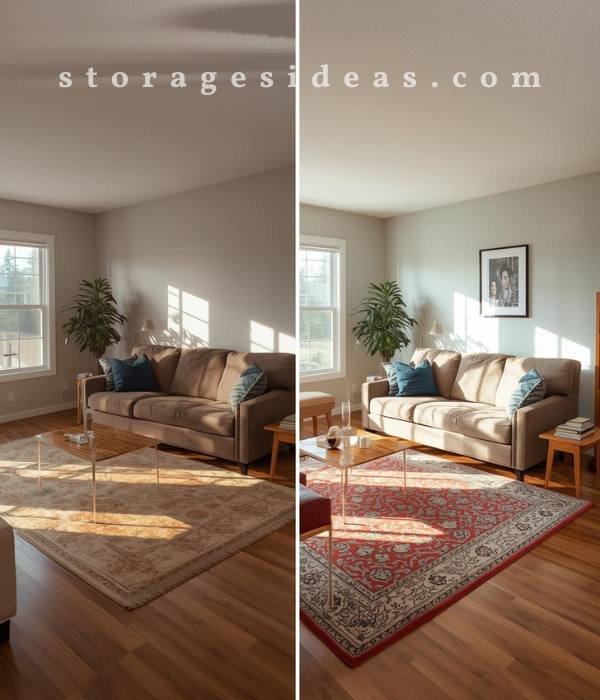
This was one of my biggest layout mistakes. I used to think that pushing every piece of furniture against the wall would make my room look more spacious. In reality, it just made my home feel like a furniture showroom open in the middle but empty in spirit.
When everything hugs the walls, your space loses depth and flow. It feels flat, disconnected, and less cozy. The worst part? It subconsciously makes guests feel like they shouldn’t move the furniture, like everything is stuck where it is.
Why does it make your home look cheap:
Professional designers always talk about “balance and flow.” When all your furniture is lined up like a waiting room, the room lacks conversation areas, warmth, and layering. It looks more functional than stylish.
How I fixed it:
I decided to “float” my furniture. I pulled my sofa a few inches forward and placed a narrow console table behind it. Then I added a soft area rug and angled an accent chair toward the center. Suddenly, my living room looked like it belonged in a home magazine.
Even in small spaces, floating one or two pieces gives the illusion of depth and design intention. It’s the difference between a room that looks placed and one that looks planned.
7. Overloading with Small Décor Pieces
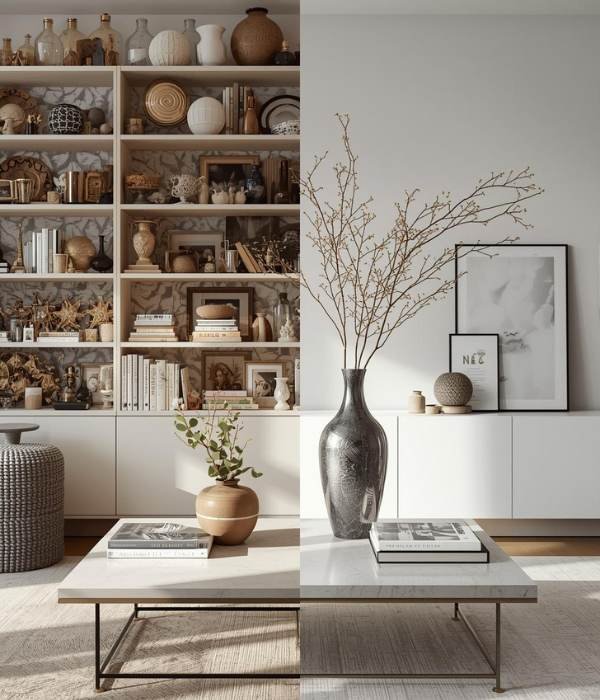
I used to love collecting small décor items, candles, tiny sculptures, little frames, and random jars. I thought they added charm. Instead, they made my home look cluttered and unorganized. Every corner had something sitting there, doing nothing.
Small items are tricky because they don’t demand attention individually, but together they overwhelm your space. It’s visual noise, your eyes keep bouncing from one thing to another without ever finding a focus.
Why does it make your home look cheap:
Too many small items make a space feel messy, no matter how clean it is. They shrink the perceived size of your room and make your décor look random, not refined.
How I fixed it:
I started thinking like a stylist: big, balanced, and intentional. I grouped similar objects together (like three candles on a tray) and replaced small accents with a few bold pieces, a large vase with tall greenery, an oversized framed print, or a tall floor lamp.
A good rule I follow now: if I can’t explain why something is on display, it probably doesn’t need to be there.
8. Neglecting the Entryway

I’ll never forget when a friend told me, “You can tell a lot about someone’s home by how their entryway looks.” At that time, mine looked like a lost-and-found of shoes scattered, keys on the floor, and mail piled up.
Your entryway is the first impression of your home, and it silently sets expectations for everything else inside. When it’s messy or plain, it gives off the vibe that the rest of the house might be too.
Why does it make your home look cheap:
A bare or cluttered entryway looks forgotten, like it’s not part of the home’s design. It immediately kills that welcoming, styled feeling.
How I fixed it:
I invested in a small console table with drawers, a circular mirror, and a basket underneath for storage. I added a small lamp and a plant to bring life to the space.
Even if your entryway is tiny, a few thoughtful touches like hooks for coats or a stylish rug can make it look polished. The moment I finished styling mine, I noticed the change instantly. It finally said, “Welcome home” instead of “Where do I put this?”
9. Using Rugs That Don’t Fit
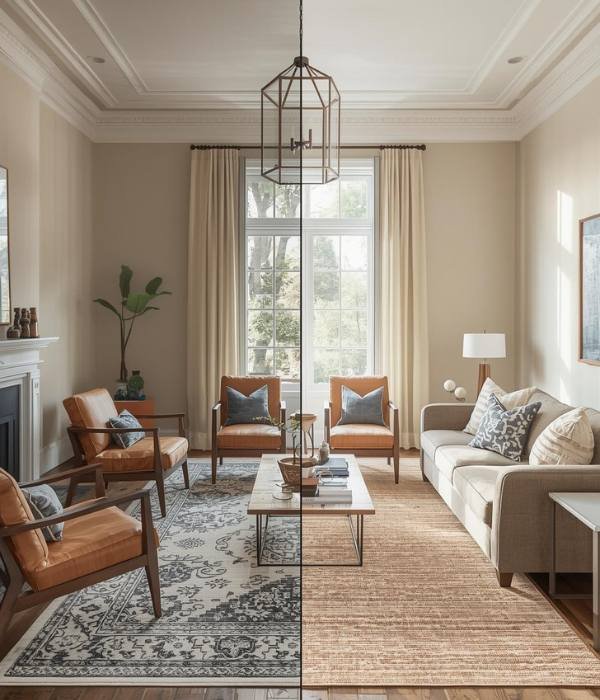
This one hurts because rugs are expensive, and I’ve made this mistake more than once. The first rug I bought barely covered the coffee table. It looked cute in the store, but once I laid it down, it made my living room look smaller, not bigger.
Why does it make your home look cheap:
A rug that’s too small breaks the flow of your furniture arrangement. It makes everything look disconnected. Instead of pulling the room together, it floats awkwardly like it’s lost.
How I fixed it:
I learned that a rug should anchor your entire space. Ideally, the front legs of your sofa and chairs should sit on the rug, creating one connected zone.
If a large rug isn’t in your budget, here’s a trick that worked for me: layer rugs. Place a smaller patterned rug over a bigger, neutral one (like jute or sisal). It adds texture, saves money, and looks intentional.
The right rug doesn’t just decorate the floor; it defines your space.
10. Ignoring Maintenance

Here’s the thing: even the most stylish home will look cheap if it’s not cared for. I’ve been guilty of letting small issues pile up: chipped paint on corners, squeaky door handles, scuffed baseboards. They didn’t seem like a big deal until I realized they were silently ruining the look of everything else.
Why does it make your home look cheap:
Neglected maintenance sends the message that your home is worn down. Peeling paint or broken knobs make spaces look old and unloved, no matter how beautiful your décor is.
How I fixed it:
I created a “home refresh checklist.” Once a month, I pick a small task: repaint a wall, replace old light switches, tighten handles, or deep clean one area.
It’s not glamorous work, but the payoff is huge. My home now always feels fresh and cared for. The difference between a cheap-looking home and an elegant one often comes down to how much attention you give the details.
11. Forgetting About Smell and Sound
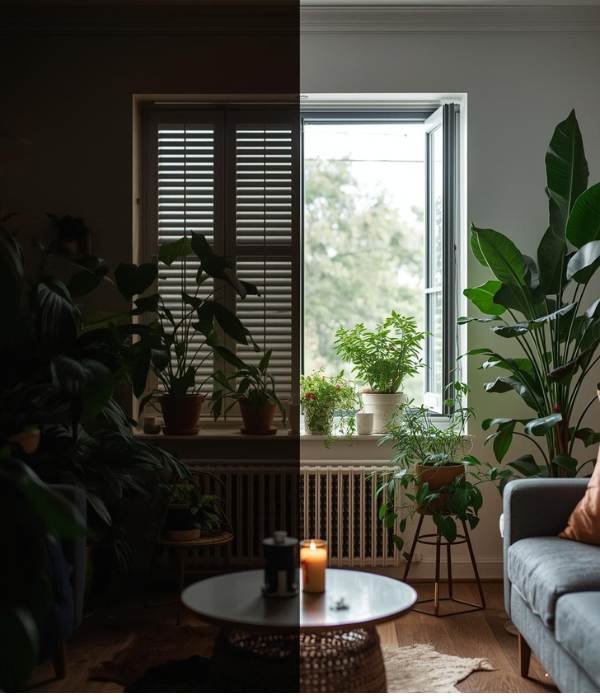
This is one of those things most people overlook. A room might look beautiful, but if it smells stale or echoes awkwardly, it still feels unfinished. I realized this one day when I came home after a few days away, my apartment smelled like dust and silence.
Why does it make your home look cheap:
A home’s scent and sound create emotional comfort. If it smells musty, people assume it’s not well-maintained. If it’s silent and echoey, it feels cold and lifeless even if it’s spotless.
How I fixed it:
Now I keep my home smelling fresh with subtle diffusers and natural scents like lavender or citrus. I light candles in the evenings and play soft background music or ambient sounds.
I also added a few soft-textured items like rugs, curtains, and cushions to absorb sound, which made the rooms feel warmer and quieter.
When your home smells and sounds inviting, it feels like a place people want to stay in, and that’s true luxury.
12. Skipping Personal Touches

This was my biggest lesson. I once decorated my apartment entirely based on Pinterest boards. It looked perfect, minimal, coordinated, and modern, but it felt empty. There was no me in it.
Why does it make your home look cheap:
A home that feels copied or impersonal lacks soul. It might look trendy, but it feels flat because there’s no emotion or authenticity behind it.
How I fixed it:
I started adding small personal touches, a photo from a trip, a handmade bowl from a local market, and my favorite books stacked on a side table. I even hung some imperfect art I painted myself.
Those details transformed my home from “styled” to “lived in.” It stopped feeling like a showroom and started feeling like a reflection of my life.
Final Thoughts
The truth is, every home has potential; it just takes a little attention to see it.
When I stopped chasing trends and started focusing on the basics, cleanliness, lighting, layout, and care, my home transformed completely.
Avoiding these mistakes that make your home look cheap doesn’t mean spending more money. It means spending more mindfulness. Small choices like hiding cables, cleaning regularly, and using proper lighting are what separate a “meh” room from a meaningful one.
So next time you feel your home looks dull or cluttered, don’t rush to buy something new. Look closer. Rearrange, repair, and remove.
Style lives in the details, and those details are completely in your control.
Because at the end of the day, elegance isn’t about how much you spend. It’s about how much you care.

